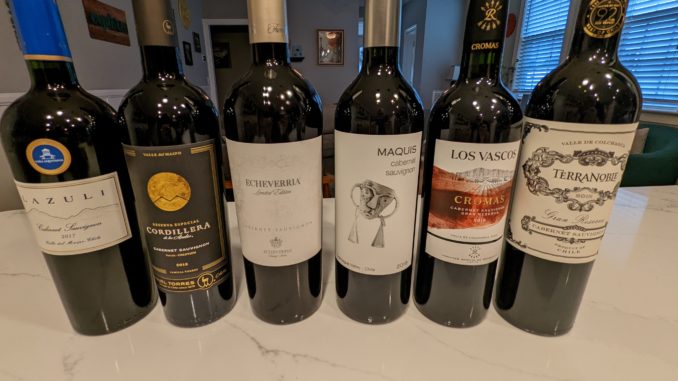
One of the earliest tasting programs I ever got to participate after starting this blog was a Wines of Chile virtual tasting. That was more than a decade ago (how did that happen?), but Wines of Chile tastings continue to be one of my favorite ways to try new wines, wineries, and regions. In the case of this program, it was a chance to not only see how Chile was approaching Cabernet Sauvignon, but how different regions and their unique terroir were impacting the flavors of the wine.
In the case of this tasting, it was 3 bottles each from the Maipo and Colchagua regions of Chile. And the best way to taste them? To open them all at once and share with friends (obviously). So what differences did I get? Which region did I prefer? Which wine was my favorite? The answer to all these questions and more can be found by scrolling on down.
Maipo Region
2017 Lazuli Cabernet Sauvignon – $45 SRP
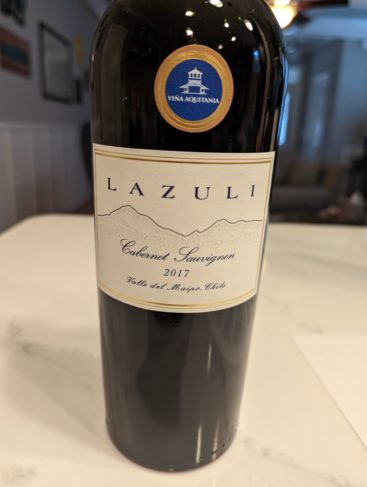
100% Cabernet Sauvignon, the wine was a beautiful ruby red, almost brick color in the glass. On the nose I got aromas of cassis, soft red fruits, and plum. On the palate I got flavors of soft red fruits, spice, and soft tannins on the finish that lingered. I really liked this wine, and it was a great way to start the tasting. The combination of soft tannins and light to medium body with the flavors all paired well with the prosciutto and goat cheese crostini with an onion balsamic jam that we served.
2018 Migel Torres Reserva Especial Cordillera Cabernet Sauvignon – $20 SRP
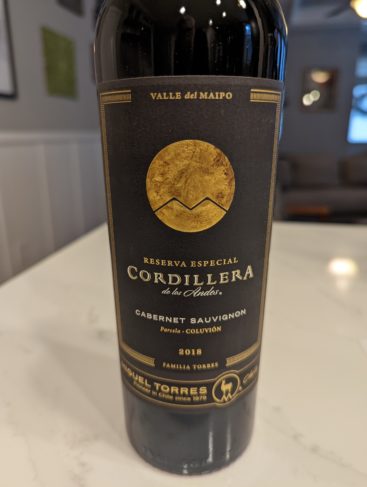
Intense, ruby-red color without the brickiness of the Lazuli, this 100% Cabernet Sauvignon shows aromas of blackberries, forest floor, hints of leather, and a touch of blueberry and/or boysenberry–I couldn’t quite put my finger on it. In the mouth the wine was clean and tart, with bright red fruit notes and a hint of toasted bread on the finish. The tasting notes suggested pairing the 2018 Cordillera with roasted red meats and game; I obviously didn’t do that, but I could see how the flavors of the wine would work well with game or roasted red meat.
2016 Echeverria Limited Edition Cabernet Sauvignon – $25 SRP
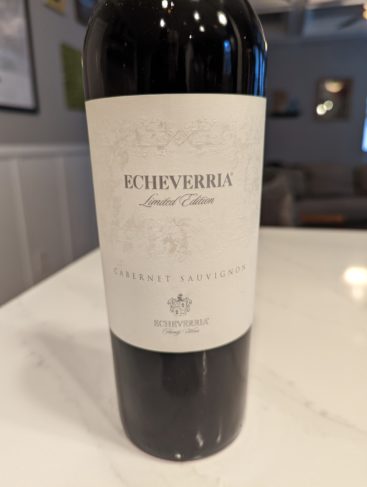
Our first wine that wasn’t 100% Cabernet. The 2016 Echeverria was a mix of 85% Cabernet Sauvignon, 10% Syrah, and 5% Carmenere. Honestly, if one of these hadn’t had a little Carmenere in it I would have been shocked. A dark black garnet color, the 2016 Echeverria had aromas of dried currant, green peppercorns, and a hint of pepper. In the mouth the wine was fruity, with a dry medium-to-full body. Flavors of cedar, pepper, and a hint of bell pepper (which I associate with Carmenere) gave way to rich tannins on the finish.
This was probably my best value wine of the night. It had lots of body at a great price, and while fine on its own, you could easily pair this with some food off the grill and not regret it, which is perfect as we head into the warmer months.
Colchagua Region
Moving to the Colchagua region also meant a different approach right off the bat. Whereas 2 out of 3 Maipo Region wines were 100% Cabernet Sauvignon, only 1 of the Colchagua wines was 100% Cabernet Sauvignon.
2018 Maquis Gran Reserva Cabernet Sauvignon – $20 SRP
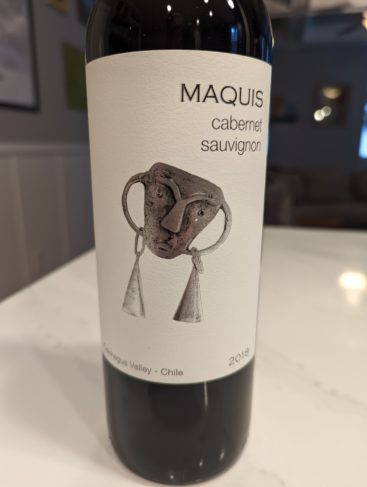
The 2018 Maquis was 90% Cabernet Sauvignon, 6% Cabernet Franc, 3% Carmenere, and 1% Petit Verdot. In the glass the wine was a vibrant and opaque shade of red. On the nose I got aromas of dried currants and plums. In the mouth the wine had good body (which I attributed to the Petit Verdot and Carmenere), with flavors of dried currant and bing cherries, and a finish that lingered pleasantly on the palate, supported by good tannic structure.
While this wine was obviously a dominant blend of Cabernet Sauvignon, without even looking at the notes it was clear to me that it had something else added in; this became even more evident later on when I did try a 100% Cabernet Sauvignon from the region. I liked the complexity and body that the blended grapes brought, and as a start to the Colchagua region portion of the tasting, this was a good start.
2018 Los Vascos Cromas Gran Reserva Cabernet Sauvignon – $22 SRP
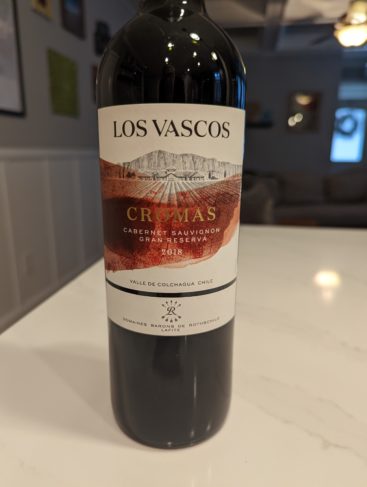
A blend of 85% Cabernet Sauvignon, 10% Syrah, and 5% Carmenere, the 2018 Los Vascos was an intense ruby-red color with hints of garnet. Juicy and fruity on the nose, I got aromas of fresh strawberry that gave way to a darker palate, with flavors of tobacco, graphite, and herbs that gave way to a very dry finish.
It’s always fun to look back at my notes days (or even weeks) after tasting wines; underlined several times on the notes for the 2018 Los Vascos I wrote “intriguing.” And that’s a good way to describe this wine–the juxtaposition of the bright, fresh aromas and the dark flavors definitely got my attention as I tasted my way through these wines, and was memorable enough that it merited being jotted down.
2019 TerraNoble Gran Reserva Cabernet Sauvignon – $20 SRP
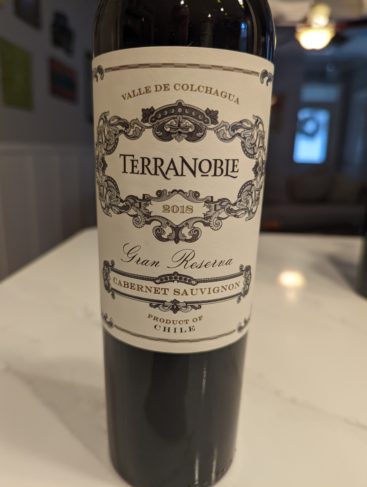
The only wine from the Colchagua region that was 100% Cabernet Sauvignon, the wine was a bright, translucent ruby color in the glass. On the nose I got aromas of ripe, sweet bing cherry and candied fruit, while in the mouth the wine was bright and light, with flavors of cherry and red berry mixed with spice and herbs that gave way to flint, stone, and mineral notes.
Wrapping Up
So what was my favorite region? While it was close, I think I overall lean towards the Colchangua. This was hard to pick in the moment, and even hard to decide two weeks after tasting the wines, but the interesting blends of wine, and the darker notes that the region provided, really appealed to me. That being said, as the weather warms, I think those lighter notes from the Maipo will probably be something that I’ll end up craving more.
As for my favorite wine, that was the 2017 Lazuli. That’s right, while I leaned towards the Colchagua region, the very first wine from Maipo had me going back again and again. In fairness though, it was really close between the Lazuli and the 2018 Los Vascos.